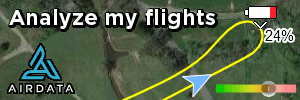- Joined
- Sep 2, 2023
- Messages
- 39
- Reaction score
- 14
- Age
- 71
I can't seem to find much information about use in the field with the U10 methane gas detector by AiLF.
I'm trying to find out if it can be used to scan a wide area like my M3E/M30 doing surveys and mapping.
We have an interest in our county where there are a lot of wells - many of which have been capped and lost over the years. A nearby town suffered a devastating explosion from a leaking unknown well and there is a lot of anxiety about others that may exist.
I sent a request to DJI asking for someone to contact me about this to discuss how it works in the field and if there is an application besides checking gas pipelines but they haven't reached out to speak to me about it.
It would be great if anyone with experience in it's use could point me in the right direction.
I'm trying to find out if it can be used to scan a wide area like my M3E/M30 doing surveys and mapping.
We have an interest in our county where there are a lot of wells - many of which have been capped and lost over the years. A nearby town suffered a devastating explosion from a leaking unknown well and there is a lot of anxiety about others that may exist.
I sent a request to DJI asking for someone to contact me about this to discuss how it works in the field and if there is an application besides checking gas pipelines but they haven't reached out to speak to me about it.
It would be great if anyone with experience in it's use could point me in the right direction.



